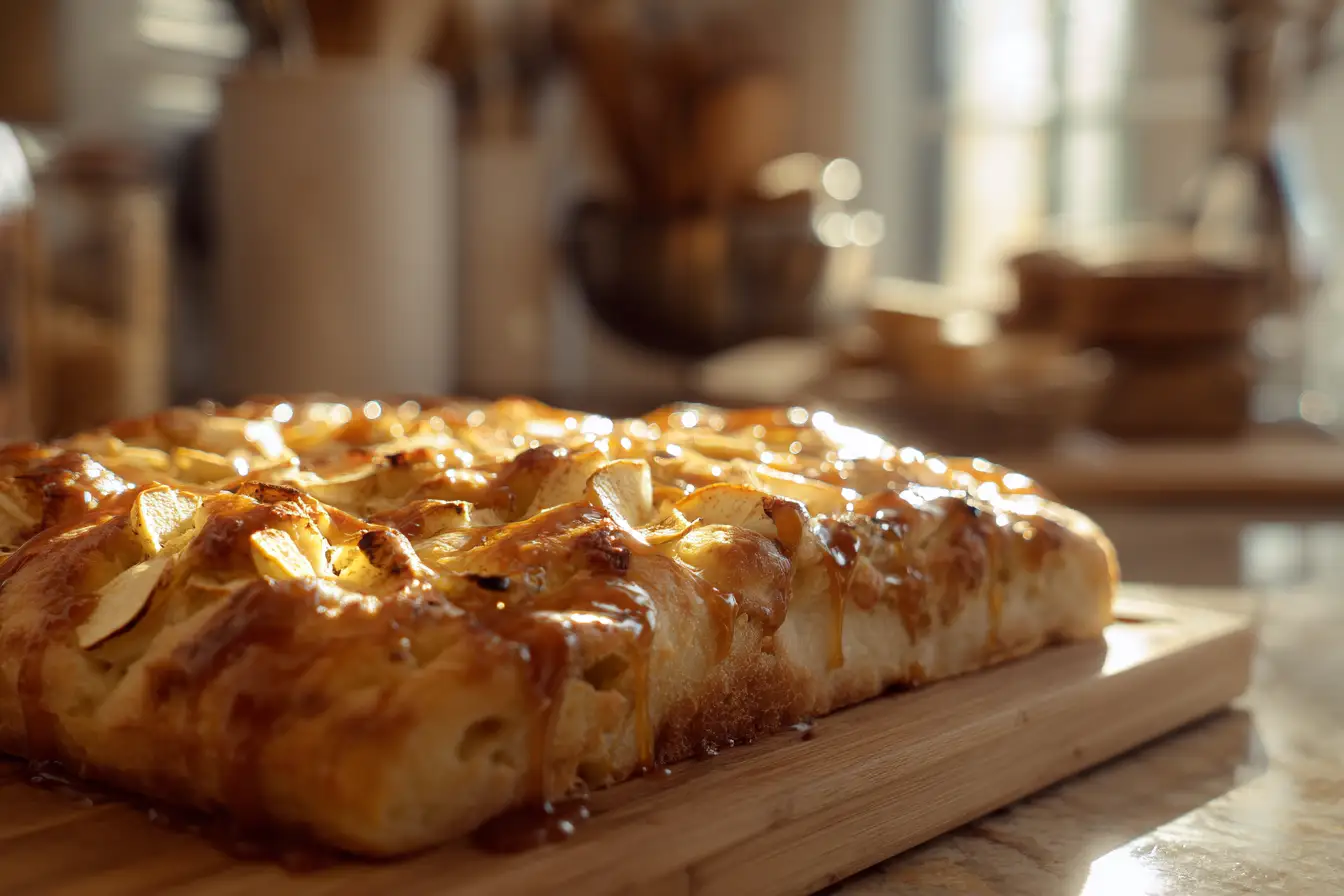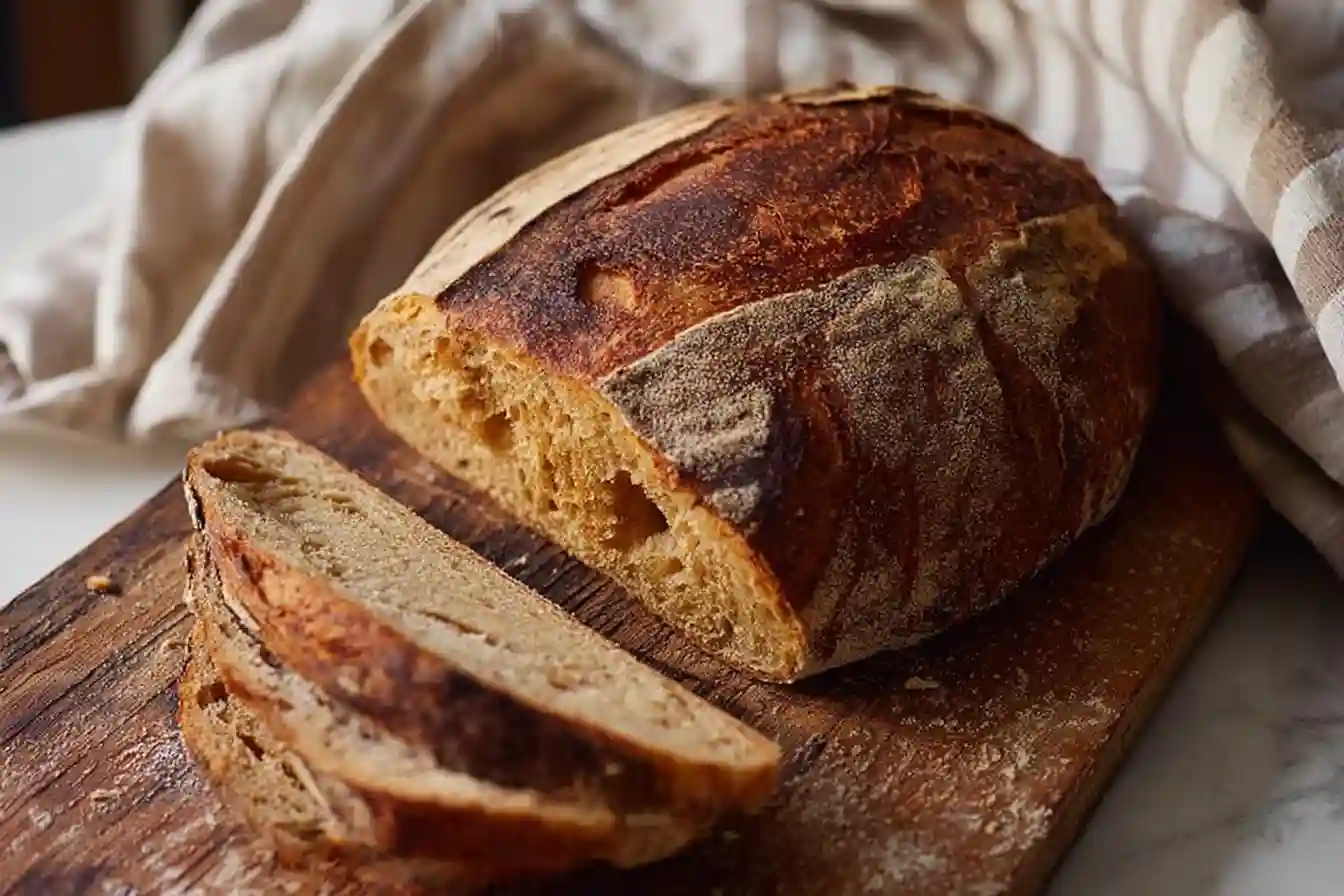Fettuccine Alfredo isn’t just a pasta dish it’s the kind of meal that feels like a warm hug. When I think back to the first time I made it at home, I remember the surprise of how something so simple could taste so rich. Just pasta, butter, and cheese yet somehow, magic happens in the pan. Over the years, I’ve learned that this dish isn’t about complicated ingredients or fancy cooking. It’s about comfort, flavor, and a story that connects Rome’s kitchens to our own. In this article, we’ll look at where Fettuccine Alfredo comes from, its essential ingredients, the secret behind its creamy sauce, and ways to make it taste even better.

The Story of Fettuccine Alfredo
From Rome to Worldwide Kitchens
Every dish has a story, and Fettuccine Alfredo’s begins in Rome during the early 20th century. Alfredo di Lelio, a Roman restaurateur, first created the dish in 1908 for his wife, who had lost her appetite after giving birth. He combined fresh fettuccine with butter and Parmesan, creating a mild yet nourishing meal. It worked his wife regained her strength, and soon Alfredo was serving the same dish to guests at his restaurant. What started as a simple act of love quickly grew into a culinary sensation.
The turning point came when Hollywood stars Mary Pickford and Douglas Fairbanks visited Alfredo’s restaurant on their honeymoon in the 1920s. They adored the dish, brought the recipe home to America, and shared it with friends. From there, Fettuccine Alfredo spread rapidly, evolving into the creamy, indulgent pasta many of us know today.
Why It Stands Out in Italian-American Cuisine
Authentic Roman Alfredo is surprisingly minimalist just pasta, butter, and Parmesan, nothing else. No cream, no garlic, no heavy sauces. The pasta water and cheese create the velvety coating. But when the recipe traveled to the United States, it transformed. American kitchens began adding cream, garlic, and sometimes even proteins like chicken or shrimp to make it richer and heartier.
This dual identity is part of the dish’s charm. In Italy, it remains light, elegant, and simple. In America, it’s often seen as decadent comfort food. The same thing has happened with other Italian-inspired creations, like cottage cheese pizza, where American twists make traditional dishes more accessible. Fettuccine Alfredo proves that timeless recipes can adapt across borders while still keeping their soul intact.
Core Ingredients of Fettuccine Alfredo
What Are the Three Key Ingredients?
At its core, Fettuccine Alfredo is simplicity at its finest. The traditional Roman recipe calls for just three ingredients: fresh fettuccine, butter, and Parmesan cheese. That’s it. The magic lies not in how many ingredients you add, but in how you bring them together. Freshly cooked pasta provides the foundation, while the butter melts and blends with the starchy pasta water. When grated Parmesan joins the mix, it emulsifies into a creamy, silky sauce that clings perfectly to each ribbon of pasta.
Fettuccine itself is important, too. Unlike thinner pasta shapes, its wide, flat noodles are perfect for catching and holding onto sauce. This makes every bite balanced and flavorful. Parmesan adds depth, saltiness, and a nutty undertone that lifts the dish without overpowering it. Using a high-quality wedge of cheese rather than pre-grated makes a huge difference, since freshly grated Parmesan melts more smoothly.
The simplicity of these ingredients highlights the essence of Italian cooking: let quality speak for itself. When you use good pasta, fresh butter, and real cheese, you don’t need anything extra to make it special.
Respectful Substitutes Without Compromise
Of course, not everyone can access or enjoy the traditional ingredients exactly as they are, but that doesn’t mean you can’t enjoy Fettuccine Alfredo at home. If Parmesan isn’t available, try Grana Padano or Pecorino Romano for a similar sharpness. For those who follow vegetarian diets, many brands now offer Parmesan-style cheeses made without animal rennet.
Butter is another area where small changes matter. Choose unsalted butter for better control of flavor. If you prefer a lighter version, you can reduce the butter slightly and add a splash of whole milk or cream alternative to maintain creaminess. Plant-based butters and dairy-free cheeses have improved greatly, and some work surprisingly well in this dish while keeping the texture close to authentic.
As for the pasta, fresh fettuccine is ideal, but dried works fine if that’s what you have. If you’re gluten-free, there are now plenty of high-quality gluten-free fettuccine options that hold up beautifully in Alfredo sauce. The goal is to maintain the heart of the dish creamy, comforting pasta that feels satisfying without losing its balance or soul.
Secrets to a Perfect Alfredo Sauce
The Role of Freshness and Balance
If you’ve ever wondered why restaurant Alfredo sometimes tastes silkier than what you make at home, the answer often comes down to freshness. Freshly grated Parmesan melts into the sauce seamlessly, while pre-packaged cheese can clump or turn grainy. Likewise, using real butter instead of margarine brings a rich flavor that can’t be faked. Even the pasta makes a difference fresh fettuccine releases more starch into the cooking water, which helps emulsify the sauce naturally.
Balance is equally important. Too much butter and the sauce feels heavy, while too much cheese makes it overly salty. The secret is to let the butter and Parmesan complement each other, creating a harmony of creaminess and depth. Adding a ladle of hot pasta water ties it all together, thinning the sauce slightly so it coats the noodles without feeling greasy.
Technique Over Complexity
A perfect Alfredo isn’t about adding more ingredients it’s about the method. One of the biggest mistakes is letting the sauce boil. High heat can cause the cheese to seize up, leaving lumps instead of a smooth coating. The trick is to combine butter and pasta water gently, then stir in Parmesan off the heat. This allows the cheese to melt gradually, creating that luscious, glossy texture.
Another secret is tossing the pasta directly in the pan with the sauce. This step ensures every strand is coated evenly, rather than just pouring sauce over pasta at the end. A wooden spoon or pasta tongs help distribute everything smoothly.
Finally, patience is key. Don’t rush the process or overload the sauce with extras. While it’s tempting to add cream, the real magic comes from letting simple ingredients transform through careful technique. When done right, Fettuccine Alfredo proves that elegance doesn’t need complexity it only needs a little care and attention in the kitchen.
For those curious about its culinary evolution, historians have traced the dish’s transformation from Rome to America, showing how cream and extras were later added to adapt to U.S. tastes historical.
Making Alfredo Pasta Taste Better

Simple Additions for Flavor Depth
While the traditional Roman Alfredo relies on only three ingredients, many home cooks enjoy adding subtle touches to deepen the flavor. A clove of garlic gently sautéed in the butter before adding pasta water can introduce a soft, aromatic layer. A tiny pinch of nutmeg used sparingly enhances the sauce with warmth without overpowering the Parmesan. Freshly cracked black pepper brings a sharp contrast that balances the richness.
Herbs also play a role. Chopped parsley or basil sprinkled just before serving adds freshness and color. For those who enjoy a little variety, roasted vegetables such as mushrooms, zucchini, or broccoli blend seamlessly into the dish, providing both texture and nutrition without taking away from the sauce’s creamy heart. These tweaks don’t replace the core identity of Fettuccine Alfredo; instead, they highlight it.
Pairings That Shine
Another way to make Alfredo pasta taste better is through thoughtful pairings. Because the sauce is rich, it benefits from sides or proteins that add balance. Grilled chicken breast is a classic choice it’s lean, tender, and doesn’t overwhelm the sauce. Shrimp is another favorite, offering a delicate sweetness that complements the creamy base. For a vegetarian option, roasted asparagus or sautéed spinach adds brightness and keeps the dish feeling light.
Even the side dishes matter. A crisp green salad with a tangy vinaigrette cuts through the richness, while a piece of warm bread like garlic butter naan or same-day sourdough dinner rolls allows you to savor every bit of sauce. If you’re looking for a complete meal, pairing Fettuccine Alfredo with a simple soup like tomato or minestrone creates contrast and balance.
The beauty of Alfredo is that it welcomes variety without losing its identity. By keeping the pasta and sauce as the star, and adding thoughtful pairings, you create a meal that feels indulgent yet balanced. It’s proof that a classic dish can be both timeless and adaptable, inviting you to make it your own.
PrintFettuccine Alfredo Recipe Creamy, Simple, and Delicious
A creamy and simple Fettuccine Alfredo recipe made with butter, Parmesan, and pasta water for authentic flavor.
- Prep Time: 10 minutes
- Cook Time: 15 minutes
- Total Time: 25 minutes
- Yield: 4 servings 1x
- Category: Main Course
- Method: Stovetop
- Cuisine: Italian
- Diet: Vegetarian
Ingredients
12 oz fresh fettuccine
4 tbsp unsalted butter
1 cup freshly grated Parmesan cheese
Salt to taste
Black pepper to taste
Fresh parsley for garnish
Instructions
1. Cook pasta in salted boiling water until al dente.
2. Reserve 1 cup pasta water, then drain pasta.
3. Melt butter in a skillet and add a splash of pasta water.
4. Toss pasta into the pan and stir gently.
5. Add Parmesan gradually, stirring to form a creamy sauce.
6. Adjust with more pasta water as needed.
7. Season with black pepper and garnish with parsley.
Notes
Use freshly grated Parmesan for the smoothest texture.
Do not let the sauce boil, or the cheese may clump.
Pair with salad, bread, or proteins like chicken or shrimp.
Nutrition
- Serving Size: 1 bowl
- Calories: 480
- Sugar: 2g
- Sodium: 380mg
- Fat: 22g
- Saturated Fat: 12g
- Unsaturated Fat: 8g
- Trans Fat: 0g
- Carbohydrates: 55g
- Fiber: 3g
- Protein: 17g
- Cholesterol: 55mg
FAQs
What are the ingredients of fettuccine Alfredo?
The traditional Roman version uses only three ingredients: fettuccine pasta, butter, and Parmesan cheese. American adaptations often add cream, garlic, or proteins, but the heart of the dish remains those three simple elements.
What is the secret to a good Alfredo sauce?
The secret lies in balance and technique. Use freshly grated Parmesan, real butter, and hot pasta water to emulsify the sauce. Avoid boiling gentle heat and steady stirring create the silky texture that makes Alfredo special.
What are the three ingredients in fettuccine Alfredo?
Classic Alfredo requires just fettuccine, butter, and Parmesan cheese. That’s it. The simplicity is what makes it timeless.
What makes Alfredo pasta taste better?
Small touches can make a big difference. Fresh herbs, garlic, or a pinch of nutmeg enhance flavor, while pairings like grilled chicken, shrimp, or roasted vegetables add balance. Serving it with a salad or crusty bread also complements the dish beautifully.
Conclusion
Fettuccine Alfredo proves that food doesn’t need to be complicated to be memorable. Born from a Roman kitchen and spread across the world, it has become both a simple classic and a comforting favorite. Whether you prefer the traditional three-ingredient version or a creamier adaptation, the heart of the dish remains the same: silky pasta coated in a sauce that feels indulgent yet approachable.
And if you’d like more comforting meals beyond pasta, recipes like ground beef stir fry show that quick, flavorful dinners can be just as satisfying. With quality ingredients, careful technique, and a few thoughtful pairings, Alfredo can shine in any kitchen. Next time you make it, let the process remind you of its origins a dish created with love, now shared at tables everywhere.





